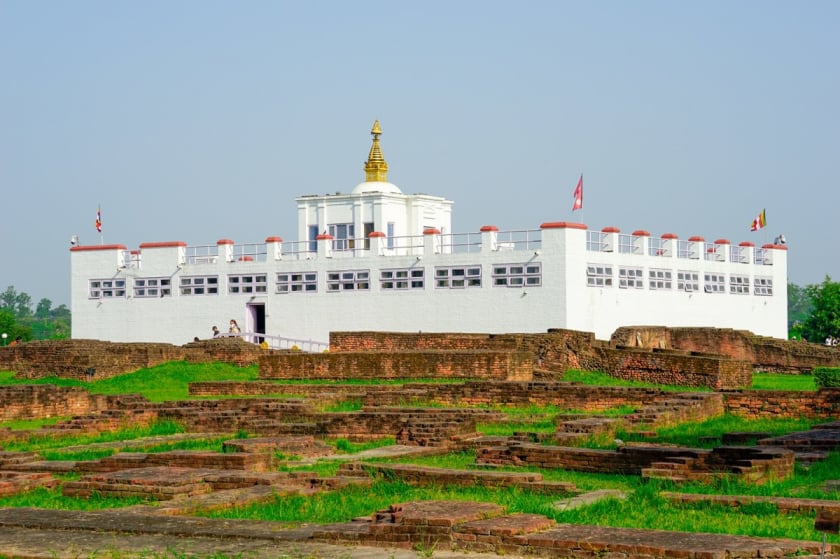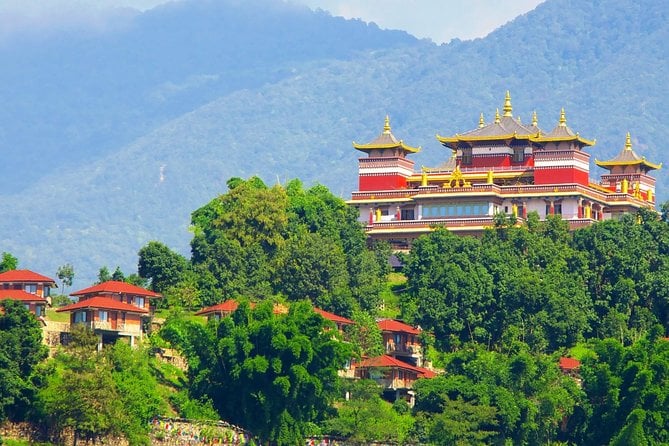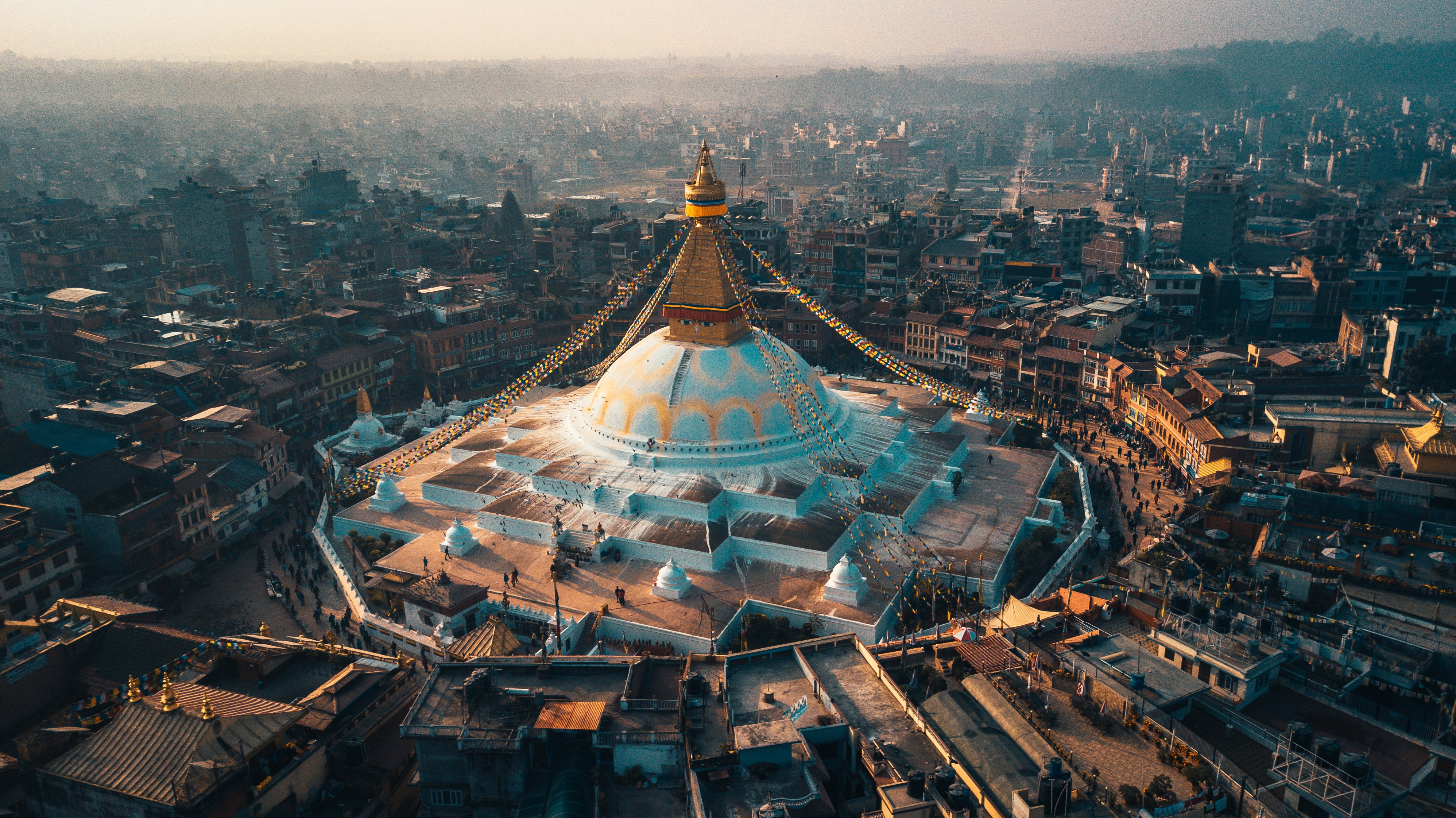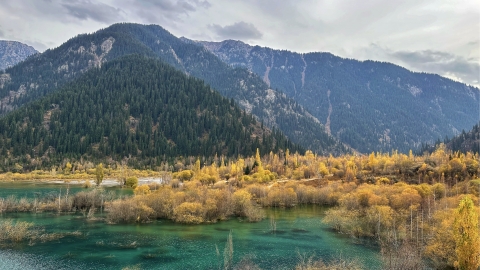Coming to Nepal, you will discover a country whose territory is nestled in the legendary and mysterious Himalayan peaks and mountains that are ranked among the highest in the world. This place offers visitors the experience of majestic and spectacular scenery. Not only attracting hearts that love adventure, discovery, dream of conquering heights as well as the desire to test themselves on Mount Everest, Kalar Pathar, Annapurna mountain range... this land is also famous for spiritual tourism, imbued with diverse cultural styles thanks to the profound influence of Tibetan and Indian culture. In Nepal, wherever visitors go, they can encounter pagodas, temples, and places to offer offerings. It can be said that the life and spirituality of the Nepalese people always go hand in hand, inseparable.

Nepal is a famous land for spiritual tourism.
Boudhanath Stupa - The Sacred Wonder of Nepal
Located in the eastern suburbs of Kathmandu, Boudhanath Stupa, meaning “Buddha Land”, was established in the 5th century, standing out with its height of 36m. The giant mandala architectural complex is located in the middle of the valley, surrounded by majestic mountain ranges. Boudhanath Stupa was recognized by UNESCO as a World Cultural Heritage Site in 1979 and is still preserved to this day. Many people call it the largest stupa in the world. Many Buddhist structures in Tibet are also modeled after the architecture of Boudhanath Stupa, the most sacred and famous structure of Nepalese Buddhism.

The gilded top of the Boudhanath stupa symbolizes the eyes of wisdom.
Surrounding the tower is a belt with 108 Buddha images, the four sides are carved with Buddha's eyes looking far and wide. Visitors feel like Buddha is always present there, watching over and protecting all living beings. This architectural work is also associated with the image of Bodhisattva Avalokitesvara, so the frame around the tower has 108 statues of his incarnations.

The Stupa is decorated with colorful lights, and thousands of butter lamps are lit brightly.
Because of the sacredness and great energy field of this place, visitors take time to walk around the kora clockwise around the tower to pray, perform the ritual of kneeling to pay respect or recite mantras, and spin the prayer wheel (prayer wheel). Standing in the middle of the large sacred complex, above which colorful flags flutter in the wind, visitors can feel the peace and good energy that the land brings.
Lumbini Garden - Where Buddha was born
Along with Bodh Gaya (where Buddha meditated for 49 days), Sarnath (where Buddha first preached) and Kushinagar (where Buddha entered Nirvana), Lumbini (where Buddha was born) is one of the four sacred places, the four holy lands of Buddhism.

Panoramic view of Maya Devi temple
The shrine of Queen Maya - the mother of Buddha is located in the center of the garden, next to the stone pillar erected by a devout king before the Christian era to commemorate Buddha. The inscriptions on the stone pillar and the stone slabs from the ground confirm that Buddha was born here, which is considered his "birth certificate". Coming to Lumbini Garden, in addition to visiting the Maya Devi temple, many visitors also walk around the sacred lake, where Queen Maya bathed before stepping ashore and giving birth to Prince Siddhartha in history.
Each visitor coming here will have different experiences from deep within, bringing complete emotions. Thu Anh (26 years old, Ho Chi Minh City), a visitor who has participated in the journey to the land of Buddha, shared: "To get here, I had to go through very difficult roads. After paying respect to Mother Maya, I chose a position opposite the temple, sitting on the steps of the lake next to the old Bodhi tree, looking towards the simple temple without too many elaborate decorations, surrounding that space is a strange familiarity and warmth".
Peace at Kopan Monastery
Kopan Monastery, located in the foothills of the Himalayas, was founded in the early 1970s. It pursues the mission of preserving and propagating the Tibetan Buddhist tradition as a path to ultimate happiness and liberation from suffering for all. In addition, hundreds of nuns, monks and devotees also gather at the monastery to practice Dharma every day.

Kopan Monastery seen from afar.
Walking around this complex, visitors will feel the hidden charm in the architectural and natural beauty here. Visit the main temple, admire the painting of the four Dharma Kings of Tibet and the 6m high statue of Lama Tsong Khapa. These are the lineages who founded the Gelug school of Tibetan Buddhism.
A stop at Kopan Monastery is an opportunity for visitors to slow down, relax with meditation sessions and enjoy the peaceful scenery. People often participate in meaningful activities such as morning prayer ceremonies, known as puja, attend courses and retreats, and admire the stupas and temples.


































